
 Late Entries
Late Entries
 Late Entries
Late EntriesHowever, if an event is registered later then it will be included in the register some time after the event occurred. In this case the quarter in which the event should have appeared is often annotated with a (hand written) entry (the late entry reference) that points to the quarter in which the event has been registered (the late entry). This is done by putting into the Page column text like
See D/39which means that the event was registered in the December quarter of either 1839 or 1939 depending on the year of the entry.
Although late entries do occur for Marriages and Deaths, most of them (over 99%) are for Births.
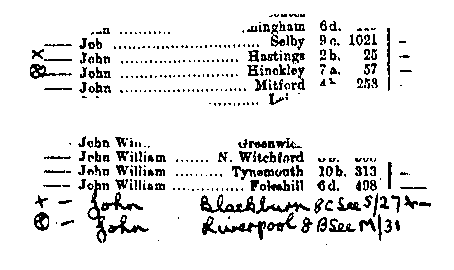
Smith John Liverpool 8B See M/31which is a late entry reference which indicates that there is an entry in March 1931 which should have been recorded in this quarter and should appear as indicated by the insertion mark. Then in March 1931 we have

Smith John Liverpool 8b 154
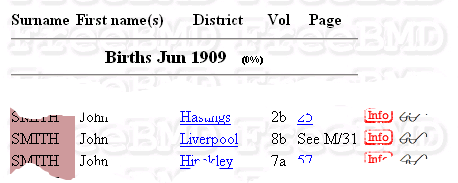
Since the page field contains the reference you could look at this
quarter to find the entry. However, if you click on the
 button this is the information that
will be displayed
button this is the information that
will be displayed
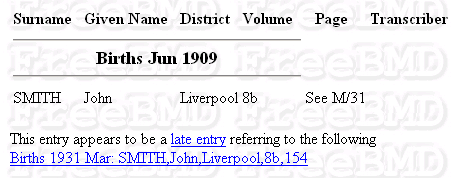
and it will be seen that the information from the late entry is
immediately available without having to perform another search. To
see the whole entry (the Mother's name is not shown) just click
on the entry.

 symbol. Clicking on the
symbol. Clicking on the
 button would show this information:
button would show this information:

If you click on the  button for this entry
you get:
button for this entry
you get:
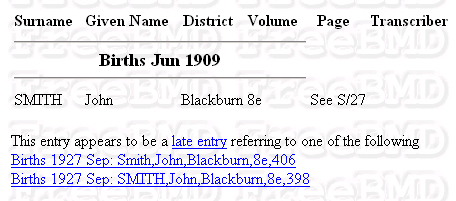
which clearly indicates that there are two possible entries that
match this late entry reference.
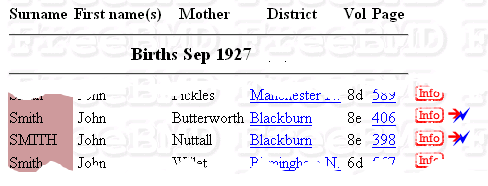
Clicking on the  button for one of them
would show you:
button for one of them
would show you:
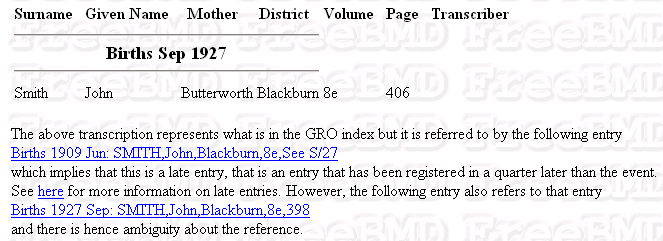
Note how the information provided by FreeBMD not only clearly indicates that there is an ambiguity but also gives you the alternative entry. It would be possible to overlook this ambiguity without the help of the advanced FreeBMD facilities, for example if the search were limited by the page number.
Smith John Liverpool 8b 154that this entry should appear in June 1909. The presumption would be that the birth occurred in the first half of 1931 which is very misleading if you know the approximate age of the person you are looking for.
SeeMch'31
Smith John Blackburn 8C See S/27appears to be erroneous because the entry in September 1927 has the volume as 8e.
Smith John Blackburn 8ewith different page numbers, of course, but there is no way to tell which of them is being referred to from June 1909
Advertisement
| Search engine, layout and database
Copyright © 1998-2025 Free UK Genealogy CIO, a charity registered in England and Wales, Number 1167484.
We make no warranty whatsoever as to the accuracy or completeness of the FreeBMD data. Use of the FreeBMD website is conditional upon acceptance of the Terms and Conditions |
 |